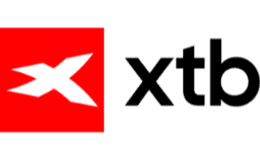
Fractional shares
Get dividend payments
From the UK’s FTSE 100 to the US’s Dow Jones, chances are that even those new to investing will have come across some of the world’s leading stock market indices. We’ve explained how they work and summarised the key stock market indices in the UK and globally.
Stock market indices are effectively virtual portfolios of pre-selected stocks that allow investors to get a sense of how an economy, or a subset of that economy, is performing. An index acts as a barometer of the state of a market and enables investors to track the ups and downs of the selection of stocks within it. An index can contain anything from less than 50 to several thousand stocks.
There are a few types of stock index. Some of the mains ones are:
The same stock can feature in more than one index. And some indices track stocks across more than one stock exchange. The Dow Jones, for example, includes stocks listed on both the New York Stock Exchange (NYSE) and the Nasdaq.
Almost as important as the stocks that make up an index is the impact each stock can have on the index’s performance – known as weighting. Some of the main weighting methods are:
There are 60 stock exchanges worldwide and millions of stock indices, so listing them all here would make for a pretty long article (we suspect we might test the word limit for our website). But we’ve rounded up the main UK and international stock indices you will likely encounter.
There are around 20 stock indices based on the London Stock Exchange, including the main market and the AIM market, home to small and medium-sized growth companies. Key indices include:
There are a few ways to get exposure to stock market indices.
For all of these types of trading, you’ll need to sign up for a broker or online investment platform to access the stock markets and relevant indices you’re interested in. If you want to buy international stocks, make sure that your chosen provider has access to the relevant stock exchange. Investing in international index funds might be a bit more straightforward, as many providers offer access to a wide range of globally focused funds.



Just as the performance of an individual stock can be affected by a wide range of factors, so too can the performance of a stock market index. Key movers and shakers can include:
Let’s assume that by index investing, you’re looking to replicate – as closely as possible – the performance (and returns) of the index you’re investing in. For example, by investing in a fund that tracks the index. This approach, also often known as “passive investing”, has pros and cons.
One of the advantages of passive investing is that, because index funds simply replicate a pre-determined set of stocks, there’s relatively little work for the fund manager to do. This typically makes for lower fees than on actively managed funds. Assuming equal performance, lower fees equal better overall returns for investors.
And in fact, evidence suggests that funds that passively track indices tend to beat actively managed funds over time, so they are a good choice for many investors to include in their portfolios.
The main downside of index investing is that, although passive funds may typically do better than active ones, as there’s no chance of the fund manager making any major mistakes, there’s also no chance of the fund manager getting it spectacularly right and beating the market.
Some investors may also argue that investing completely in line with an index is too restrictive on the assets they can include in their portfolio.
![]()
It’s not really a case of which is better, so much as which is more straightforward and suited to different investors.
Investing in a fund is the simpler and more straightforward option. With a single transaction, you can get exposure to every single stock featured in an index. You’re effectively already investing in a portfolio of sorts, which automatically spreads your risk. Fees are likely to be lower, plus you don’t risk having to cough up the dough to buy a full share in every company in an index, which could be out of some people’s price ranges. Investing in funds is often a good choice for less experienced investors.
In contrast, it’s fair to say that buying shares in all the companies that make up even a relatively small index, such as the FTSE 100, would be fairly labour-intensive. And if you wanted to mimic it precisely, you’d need to be willing to devote time and effort to keeping up with changes to an index as the companies on it change over time. And to pay a hefty whack in transaction fees for buying and selling shares. On the plus side, it’s a more flexible approach. If you didn’t want to invest in some of the companies in an index, you could simply exclude them from your purchases or swap in others that fit better with your investment preferences. This approach might be preferable for some more experienced investors.
Stock market indices can be a valuable tool for investors to gauge the state of an economy or sub-sector. Meanwhile, index funds can be a good entry point to investing for beginners, allowing them to get exposure to a fuller portfolio of stocks than they might be able to by investing directly in stocks. They can also be a less risky option for more experienced investors to include in their portfolios, and investing in international stock indices can make for a more balanced portfolio than sticking with UK investments alone. Head over to our full guide on how to invest in index funds to get started.
All investing should be regarded as longer term. The value of your investments can go up and down, and you may get back less than you invest. Past performance is no guarantee of future results. If you’re not sure which investments are right for you, please seek out a financial adviser. Capital at risk.
The three best-known US indices go head to head. Search by company, review performance over time and understand key differences.
Learn how to invest in the Euro Stoxx 50 from the UK and discover some of the best Euro Stoxx 50 index funds and where you can invest in them.
Find out the key differences between the Nasdaq stock exchange and the S&P 500 index, along with their similarities and overlaps.
Find out more about the Nikkei 225, some companies that make it up and how you can invest in the Nikkei 225.
Find out what makes up the Hang Seng index. We’ve compiled the different ways that you can invest in Hang Seng, such as through ETFs.
Find out how to invest in DAX, the 40 largest companies on the Frankfurt Stock Exchange. We’ve compiled some ETFs and other ways you can invest.
Find out how you can invest in the FTSE 250 with exchange traded funds (ETFs). See which 250 companies on the London Stock Exchange are in the FTSE 250.
In a nutshell, an index fund is a low-cost portfolio of shares and other assets that tracks a financial or stock market index. They’re a popular investment choice in the UK and worldwide.
Learn how to invest in the S&P 500 from the UK and discover some of the best S&P 500 index funds and where you can invest in them.
Find out how you can invest in the second-oldest stock market index, the Dow Jones.